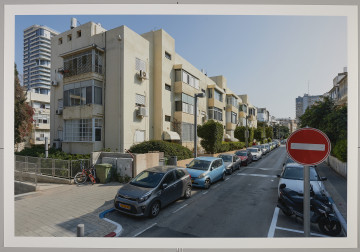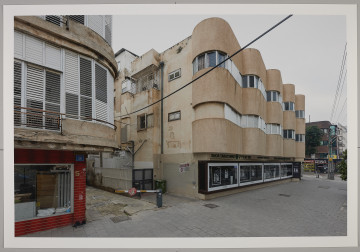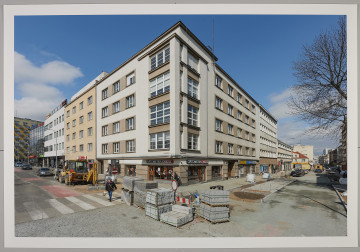
Workers' housing estate, Tel Aviv
2019
Museum of the history of Polish Jews
Part of the collection: Iconography of Szczecin 1900-1945
The oldest history of Szczecin is known thanks to the results of archaeological investigations carried out over several decades on today's Castle Hill and the riverside area located at its foot. The earliest written sources did not appear until the middle of the 12th century when Szczecin had already experienced several centuries of development. The hagiographers of St. Otto of Bamberg, Apostle of Pomerania, describe Szczecin as the oldest and most famous City of the Pomeranian people, the mother of Pomeranian towns, and the capital of the whole province. The foundations of the City were laid in a small settlement on the site where the Castle of the Pomeranian Dukes is situated today. Already in the 10th century, a riverside district with direct access to the river began to form. In the second half of this century, at least a two-part settlement complex was in place, and the spatial arrangement introduced at that time survived until the City was founded under the Magdeburg Law and reorganised in the late Middle Ages in connection with the delimitation of burgher plots and squares and the erection of brick buildings, including public buildings. Szczecin's Sienny Rynek [German: Heumarkt, also called New Market, Rzepichy Square and Old Market, was established at that time. Initially, it was a place where hay was traded. It was one of the main old town squares of the so-called Lower Town, where first a wooden and then a brick Gothic town hall was built, which was rebuilt in the Baroque style in the 17th century. At that time, the Market Square was surrounded by richly decorated burgher houses. In the 19th century, the Szczecin Stock Exchange was built here, and the square flourished with trade in everyday products displayed on numerous stalls. It was a lively place until the end of the Second World War. After the war, the destroyed town hall was rebuilt partly in Gothic and partly in Baroque style. Today's Sienna Market Square is surrounded by tenement houses modelled on the old buildings, and from Mściwoja Street - blocks of flats built in the immediate post-war period.
Małgorzata Peszko
Author / creator
Dimensions
cały obiekt: height: 13 cm, width: 18 cm
Object type
negative (photograph)
Creation time / dating
Creation / finding place
Identification number
Location / status

2019
Museum of the history of Polish Jews

2019
Museum of the history of Polish Jews

2019
Museum of the history of Polish Jews
DISCOVER this TOPIC
Museum of King Jan III's Palace at Wilanów
DISCOVER this PATH
Educational path